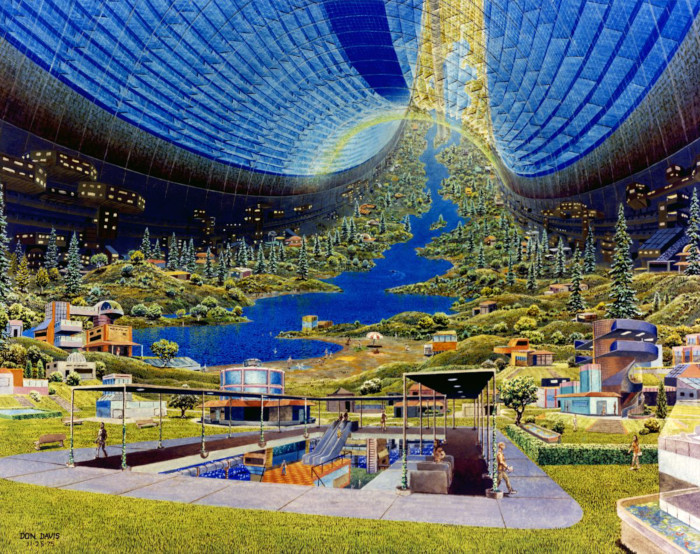More real than reality
In postmodern semiotics Baudrillard coined the term hyperreality, basically a state/characteristic of something unable to be distinguished from reality. When thinking about the concept itself, it’s necessary to understand — in a semiotic sense — what Baudrillard defines as simulation and simulacra. To not delve deep into these subjects here (you can find more in this book), these concepts manifest themselves in postmodern societies with increasingly meta references, for everything. Signs don’t refer anymore to anything except themselves, according to the book Simulations by Jean Baudrillard. The simulacrum isn’t just a copy of what is real, but it is a new reality, a copy without the original, built upon references to other references themselves;
There’s a link between the existence of hyperreality and the human desire for the real, according to Umberto Eco. Hyperreality is present in a multitude of areas, especially the media and the internet. Taking the internet as an example and with the aid of cyberculture studies, one can see this concept in social media, the culture of memes, games, etc. These “universes” that exist in modern cyberculture usually are built upon references of other references, e.g. the expression layers of irony refers in some sense to hyperreality on the internet. In media, we can also see this concept applied in news and propaganda, but especially on reality TV. With people’s desire for reality, they can fabricate this false reality (after all, it’s our natural tendency to look for reason in chaos), or will unconsciously believe an already fabricated reality as the truth. Buying into these can have a strong effect on those who consume it, like changes in perception, new beliefs, and new internal truths, based on the fabricated reality.
Music of the Simulacra

However, hyperreality isn’t the only topic of this post. We now diverge into a VAPORWAVE subgenre (usually) called Utopian Virtual. It is one of the main subgenres of vaporwave, usually with a clean sound, constant artificiality-inducing sonority, propelling us into virtual reality, a utopia, a hyperreal universe indistinguishable from real life (or is it?). With constant excerpts from 90s technology sound, the music can address topics related to cyberculture, creating an atmosphere of a retro-futuristic utopia.
A new utopia, filled with digital unnecessary conveniences, technology-fueled luxury, technologically infused happiness, and artificial well-being. It’s impossible to write about this genre without mentioning the pioneering album Far Side Virtual by James Ferraro. This album has various elements from Ferraro’s work, as explained in Pitchfork review: “[…] toyed with similar concepts of getting lost in the technological, consumerist singularity of energy drinks, action flicks, and world wide web convenience”. There is a layer of parody in the music, a sort of critique of its subject, but the parody is found within the sounds themselves. A very interesting approach in music, which I can make a parallel to some specific cyberculture aspects that do the same. As an example, making fun of X, by just posting/sharing X — the content itself is unchanged, however, the critique/fun of it is only perceived through the meta references of the interlocutor, in a semiotic sense.
Taking a look at the songs in the album also helps with unveiling the utopian virtual aspect of it:
- “Linden Dollars”
- “Global Lunch”
- “Dubai Dream Tone”
- “Sim”
- “Bags & Contrapposto Water Bottle”
- “PIXARnia and the Future of Norman Rockwell”
- “Palm Trees, Wi-Fi and Dream Sushi”
- “Fro Yo and Cellular Bits”
- “Google Poeises”
- “Starbucks, Dr. Seussism, and While Your Mac Is Sleeping”
- “Adventures in Green Foot Printing”
- “Dream On”
- “Earth Minutes”
- “Tomorrow’s Baby of the Year”
- “Condo Pets”
- “Solar Panel Smile”
Pad Chennington’s video about the genre is also a good intro to the subject, aesthetic and pivotal albums in Utopian Virtual:
This is concept-driven music. Hyperreality is one of the main topics addressed in utopian virtual, the concepts of virtual simulations more real than reality and the relationship between consumerism, technology, and the human desire in this ultra-luxury-technological-virtual utopia. The excellent article The Rise of Conceptronica, published in Pitchfork by Simon Reynolds, explain further this contemporary movement in electronic music, not limited to semiotics or hyperreality.
This post is an introduction to utopian virtual and hyperreality, but touches only the surface on both of these topics. There’s so much to explore, but for those interested in the semiotic sense of it I suggest reading some Baudrillard texts (I read very few of them at university, I might have to read it again :`) ) and exploring the musical depths of Bandcamp and Youtube.
